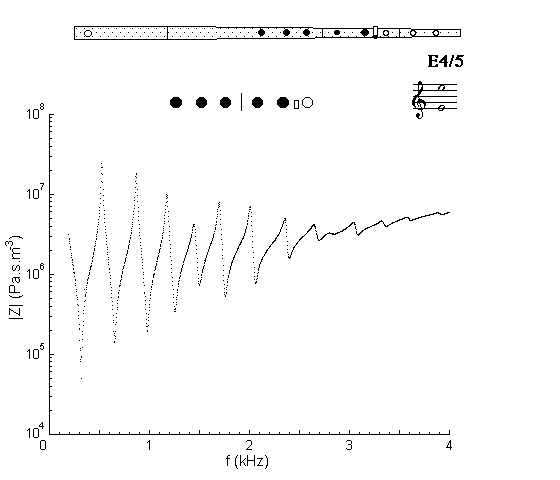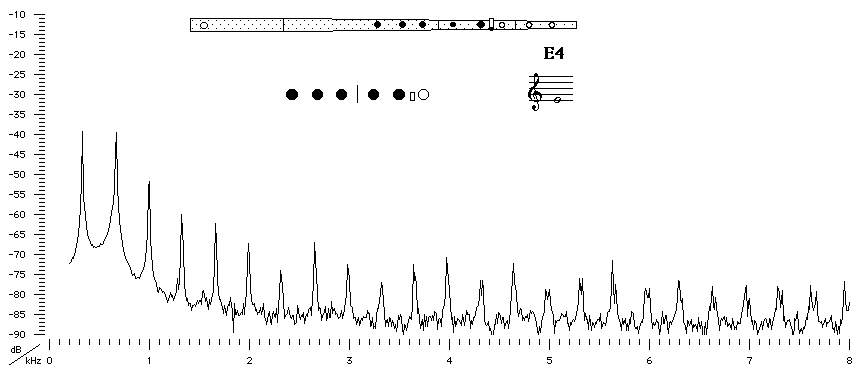| Acoustics of baroque, classical and modern flutes |
classical flute
|
E4 |

|
Acoustic and Fingering Schematic Non-specialist introduction
to acoustic impedance |
From E4 to B4 and E5 to B5, each standard fingering serves for two notes. The flutist uses the same fingering for E4 and E5, but changes the speed, length and shape of the jet. The hole of the RH 3rd finger is placed higher than acoustic arguments would recommend, in order to bring it within easy reach of the finger. Consequently, it must be smaller than expected (the smallest on the instrument). The filtering effect of the downstream holes disrupts the regular array of minima at frequencies above about 1.5 kHz - significantly lower than on the Boehm flute.
The difference between the lowest note and a note with several holes open is greater on the conical flutes than on the Boehm flute. One might informally say that, because the Boehm flute has more and bigger tone holes, opening up the holes on Boehm flute is closer to 'sawing the end off', whereas the smaller and more widely spaced holes on the conical flutes have a greater effect when they are open downstream.

Sound spectrum
of a classical flute with a C foot played using fingering for E4.
![]()
![]()
![]()
![]()
![]() You can hear E4
played by Geoffrey Collins.
You can hear E4
played by Geoffrey Collins.
| Acoustic measurements are available for these flutes - modern B, modern C, classical C, classical D, classical flared, baroque Sound clips are available for modern B, classical flared and baroque |
To compare flutes, it is easiest to open a separate browser window for each instrument. |